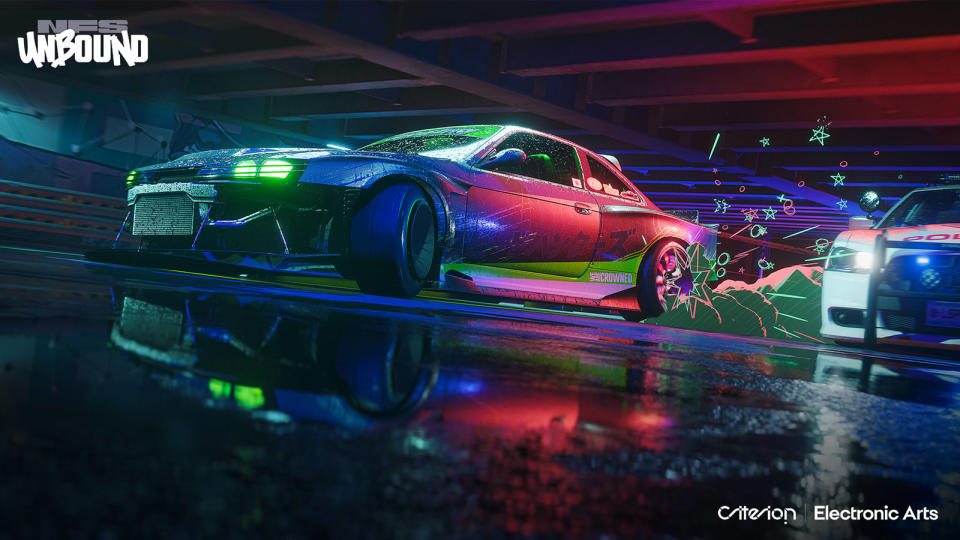'Need for Speed: Unbound' Review: Fully back on track

Autoblog may receive a share from purchases made via links on this page. Pricing and availability are subject to change.
The Need for Speed series is finally back with "Need for Speed: Unbound." And it's been a while since the last installment, "Need for Speed: Heat," which launched three years ago. And this one was developed by Criterion Games, rather than Ghost Games, which was dissolved and turned into a support studio. But in the tumultuous years between releases, "Unbound" has emerged as the best Need for Speed in years.
Interestingly, Criterion wasn't able to spend the entire three years off working just on Need for Speed. We spoke with the game's creative director, Kieran Crimmins, who revealed that the development time for this game was pretty similar to past ones (i.e. less than three years), since Criterion was providing support in developing a Battlefield title.
While we can't say for sure, that does seem to explain why there are substantial similarities between "Unbound" and the Ghost-developed "Heat." There are very similar risk-versus-reward mechanics with pursuits and earning money from races, the basic handling ideas of balancing grip and drift styles and on-road and off-road advantages, and much of the customization are very similar.
But what Criterion has managed to do is refine and tighten what Ghost built, fixing what was broken, and making everything else run better. And it was a superb strategy.
Right off the bat, the game runs much better. Load times are dramatically reduced. The game runs at a very steady 60 frames per second at 4K resolution (we played on PlayStation 5). These are great not just for getting you into the action much faster than before, but it also massively aids in making the game feel and play faster. Need for Speed has real speed now.
Also, the cel-shaded characters and graffiti-inspired graphics during gameplay look extremely cool, and aren't distracting. We would be very interested to see what Criterion could do with a game more fully embracing this style, something along the lines of "Auto Modellista" from Capcom. Maybe the next installment could push it some more.
The driving experience is significantly improved, too. Cars still have a heft and slight understeering tendency early on, but modifications quickly change that to make them feel more responsive than before. But more importantly, the strange tap-brake/gas-to-drift mechanic is no longer the only way to drive. You can switch that function off to make the game control much more like other racing games. It makes it much easier to use more careful gas and brake inputs to finely adjust the car in corner, and rely on the handbrake more to initiate drifts.
Another change is the boost system. Nitrous is now available on demand in any amount you prefer, rather than being activated in stages. And there's a new "burst" nitrous function that also builds with drafting, drifting, passing traffic closely and more, and it works similarly to the slipstream boost in Midnight Club and Grand Theft Auto games. The catch is that you have a brief window to use it after earning it. Furthermore, it can be built up to faster levels the longer you charge it. It adds another level of depth and strategy in races.

 Yahoo Autos
Yahoo Autos 

